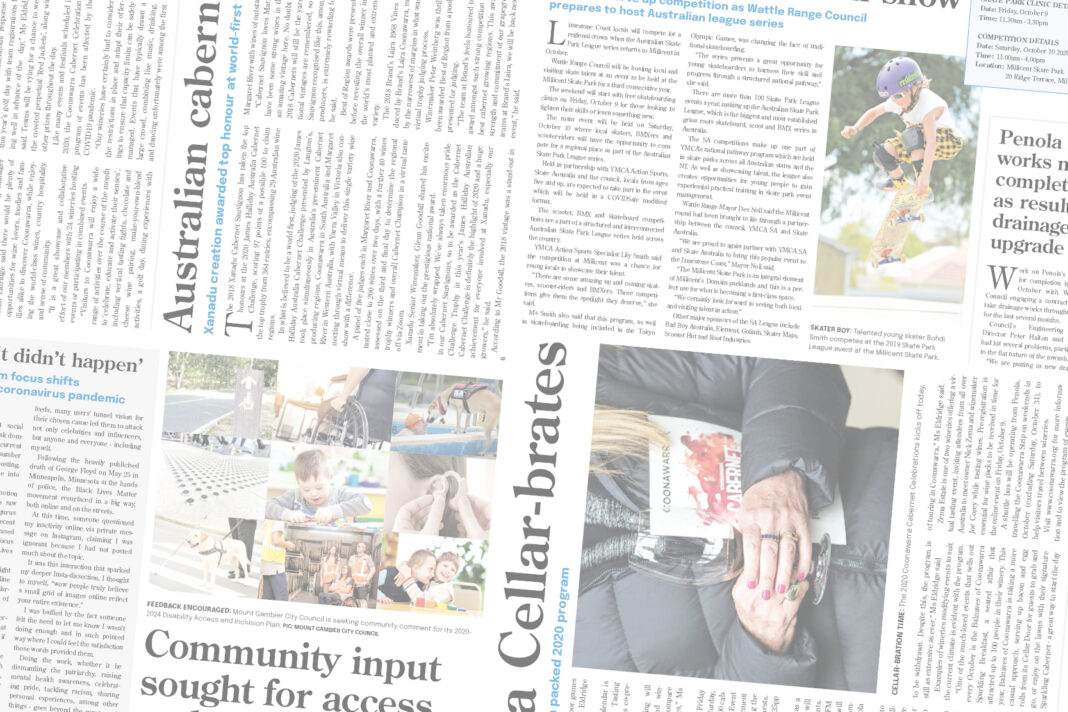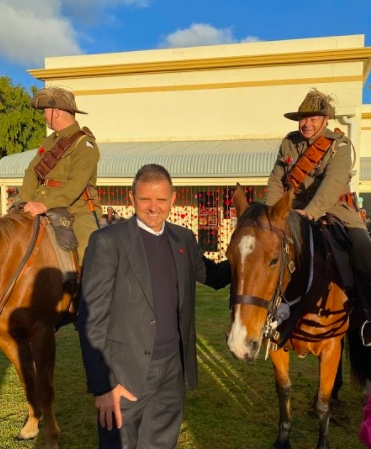The remarkable war service of a local nurse who cared for wounded Gallipoli soldiers was told to the annual Anzac day mid-morning service at the Millicent Cross of Sacrifice on Sunday.
The little-known story of Nurse Margaret Sutherland was shared with the hundreds of attendees by Wattle Range Council Deputy Mayor Councillor Moira Neagle. She was deputising for Mayor Des Noll. “Anzac Day is a time to remember our past and those who acted on our behalf down through the conflicts to which we humans are drawn,” Cr Neagle said.
“It is a day to respect the courage and commitment of those who were called to undertake the difficult, the challenging and the momentous acts of war. “The story I am going to retell today is of a woman who grew up here in Millicent and volunteered to be a nurse during World War I.
“Margaret (Maggie) Ann Sutherland was born March 8, 1888 in Millicent. “She was the daughter of William and Christina Sutherland and her childhood home was Lossie House (which still stands near McLaughlin Park).
“She enlisted into the Australian Imperial Force on June 29, 1915 as a Staff Nurse and left Australia for Egypt on the Morea in August of that year, accompanied by four other nurses from South Australia.
“Maggie joined the staff of the Australian General Hospital at Suez. It was here the AIF trained before going to Gallipoli. “The hospital provided medical support during training and later received wounded following their deployment to Gallipoli.”
According to Cr Neagle, more than 2000 Australian women served overseas during that war. “These courageous and dedicated women worked in difficult and sometimes terrifying conditions,” she said.
“Weapons used during trench warfare created terrible injuries that required complex medical treatment. “Maggie would have nursed horrendously wounded soldiers who had been shipped back from Gallipoli.
“With what we would now consider to be primitive medical care, nurses would have cleaned wounds, changed bandages and administered crude pain relief.
“They would have supported soldiers with missing limbs, loss of sight and/or hearing and those suffering shellshock which endured long after the war.
“Far from family and friends, Maggie would have had to deal with these traumas and the direct impact on her with little support. “She returned to Australia in 1916 on the Suffolk, maintaining her nursing duties to the wounded throughout the trip.
“On returning to Millicent, Nurse Sutherland was accorded a welcome home by the ladies of the Saint Andrews’s Presbyterian church through the Cheer-up society.
“At a local medal presentation for returned soldiers, the organising committee was placed in a dilemma as to whether to give her a medal too.
“They came to the conclusion that she ranked as one of our soldiers and they duly presented her with the same medal as they gave to the men.
“By the time she was a mother of two and in her thirties; Maggie was experiencing mental health issues long before PTSD was an identified condition. “She spent time in asylums during her life and died (in Melbourne) at the age of 70.
“The selfless contributions made by thousands of Australian and New Zealand men and women are the focus of our memories today.
“Lest We Forget.”



